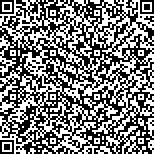| 引用本文: | 赵燕楚,赵 丽,张武昌,刘素美,蒋增杰,方建光,赵 苑,肖 天.桑沟湾微微型浮游生物丰度和生物量分布的季节变化[J].海洋科学,2018,42(5):145-154. |
| |
|
| |
|
|
| 本文已被:浏览 2053次 下载 1273次 |

码上扫一扫! |
|
|
| 桑沟湾微微型浮游生物丰度和生物量分布的季节变化 |
|
赵燕楚1,2,3,4, 赵 丽1,2,4, 张武昌1,2,4, 刘素美2,5, 蒋增杰6,7, 方建光6,7, 赵 苑1,2,4, 肖 天1,2,4
|
|
1.中国科学院海洋生态与环境科学重点实验室(中国科学院海洋研究所);2.青岛海洋科学与技术国家实验室海洋生态与环境科学功能实验室;3.中国科学院大学;4.中国科学院海洋大科学研究中心;5.中国海洋大学海洋化学理论与工程技术教育部重点实验室;6.农业部海洋渔业资源可持续利用重点开放实验室, 山东省渔业资源与生态环境重点实验室, 中国水产科学研究院黄海水产研究所;7.青岛海洋科学与技术国家实验室 海洋渔业科学与食物产出过程功能实验室
|
|
| 摘要: |
| 于2013年4月、7月、10月和2014年1月, 分四个季节在桑沟湾利用流式细胞技术对桑沟湾微微型浮游生物丰度和生物量的时空分布特征进行了研究, 并统计分析了其与环境因子之间的关系。结果表明, 四个季节中桑沟湾聚球藻丰度和生物量分别为0.04×103~408.59×103个/mL、0.01~102.15 mg/m3,微微型真核浮游生物的丰度和生物量分别为0.21×103~99.64×103个/mL、0.31~149.46 mg/m3, 异养细菌的丰度和生物量分别为3.34×105~50.16×105个/mL、6.68~100.32 mg/m3。四个季节中, 夏季桑沟湾微微型浮游生物的丰度和生物量高于其他季节。异养细菌对微微型浮游生物总生物量的四季平均贡献为62.11%, 高于自养微微型浮游生物; 微微型真核浮游生物占自养微微型浮游生物总生物量比例最高,平均可达86.85%。统计分析显示温度、叶绿素a和营养盐浓度是影响桑沟湾微微型浮游生物丰度和生物量分布的主要因素。上述结果为桑沟湾生态环境的检测和评估提供了基础数据。 |
| 关键词: 微微型浮游生物 丰度 生物量 季节变化 桑沟湾 |
| DOI:10.11759/hykx20170623001 |
| 分类号: |
| 基金项目:国家自然科学基金委员会-山东省人民政府海洋科学研究中心联合资助项目“海洋生态与环境科学”(U1606404); 国家自然科学基金项目(41306161, 41306160, 41676147) |
|
| Seasonal variation of the abundance and biomass of picoplankton in the Sanggou Bay |
|
ZHAO Yan-chu,ZHAO Li,ZHANG Wu-chang,LIU Su-mei,JIANG Zeng-jie,FANG Jian-guang,ZHAO Yuan,XIAO Tian
|
| Abstract: |
| This study aims to investigate the abundance, biomass, and distribution of picoplankton in the Sanggou Bay using flow cytometry in April 2013 (spring), July 2013(summer), October 2013 (autumn), and January 2014(winter) and analyze the correlations with environmental factors. The results revealed that the abundance and biomass ranged as follows: Synechococcus, 0.04×103—408.59×103 cells/mL and 0.01—102.15 mg/m3; picoeukaryotes, 0.21×103—99.64×103 cells/mL and 0.31—149.46 mg/m3; and heterotrophic prokaryotes, 3.34×105—50.16×105 cells/mL and 6.68—100.32 mg/m3, respectively. The abundance and biomass of picoplankton were higher in summer than other seasons. In four seasons, the biomass of heterotrophic picoplankton, the average contribution of which accounted for 62.11%, was higher than that of autotrophic picoplankton. In autotrophic picoplankton, picoeukaryotes were the major contributor of the biomass, and their average contribution was 86.85%. Temperature, chlorophyll a, and nutrient concentrations were primary factors that affected the abundance and biomass distribution of picoplankton. This study will provide the basic data for the evaluation of the ecological environment of the Sanggou Bay. |
| Key words: picoplankton abundance biomass seasonal variation Sanggou Bay |
|
|
|
|
|
|
